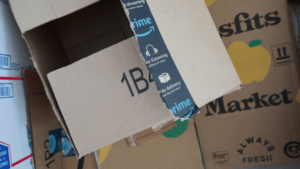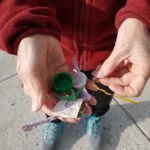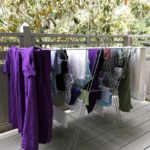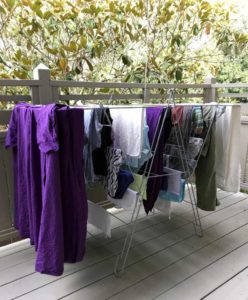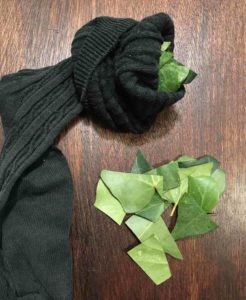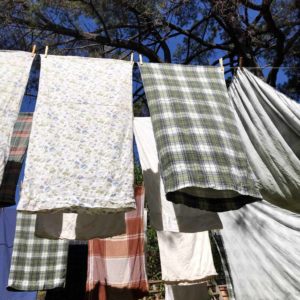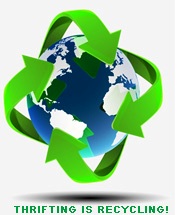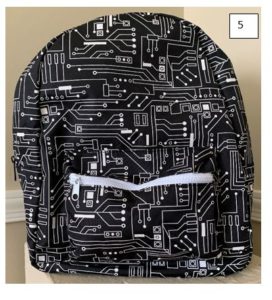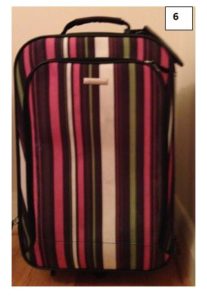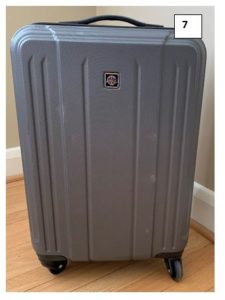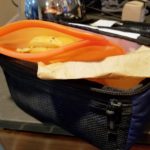Baltimore County officials have stopped a proposal to transform a tiny Falls Road shopping strip near Lake Roland Park into a cluster of apartments, restaurants and offices because the sewer system is inadequate.
The Baltimore County Board of Appeals recently upheld a judge’s rejection of a plan created by the Bluestem development team, which includes Baltimore-based Vanguard Retail Property Development. Neighbors have spent years voicing concerns about the project’s impact to an area already dealing with traffic and sewer problems, as well as on the park.
The decision comes amid the county’s federal obligation to complete more than $800 million in sewer improvements. That commitment is part of a 2005 consent decree with the federal Environmental Protection Agency to eliminate the county’s sewer overflows.
“We’re very pleased with the board’s decision and believe they correctly upheld [the judge’s] decision, which itself was supported by substantial evidence on the sewer issue,” said Michael McCann, an attorney for North County Preservation, the Lutherville Community Association, Pikesville Communities Corporation and 16 other groups opposing the Bluestem development.
Vanguard, court records show, wants to build 56,600 square feet of high-rise restaurants, stores, offices and 152 apartments at the Falls Road site. Located in Towson’s Bare Hills community, it borders the 500-acre Lake Roland Park.
The site is home to a handful of stores and mulch business Hollins Organic Products. Vanguard bought the 6-acre parcel just north of the city in 2016 for $4.25 million.
Although the decision halts the plan’s progress, Vanguard could appeal the board’s ruling in Baltimore County Circuit Court.
“We are disappointed with the recent ruling on the Bluestem development, but remain committed to our vision to make this property into something that better serves the wonderful surrounding community, neighbors and current tenants of the space,” Vanguard’s Leonard Weinberg said in a statement.
Wastewater from Bluestem would have discharged into a 42-inch sewer pipe located underneath Lake Roland. The county’s Design Review Panel granted approval to Bluestem in 2018, and it was later sent to County Administrative Law Judge John E. Beverungen in 2019.
Beverungen said Bluestem couldn’t move forward because “the sewer system serving the property is woefully inadequate to handle existing demand, much less additional inputs from recently approved development in the Towson area.”
Beverungen’s ruling was based on the consent decree, testimony from an environmental engineer and evidence from a study of the county’s sewer system, court records show. The county previously hired Baltimore-based RK&K civil engineering firm, and the firm concluded in 2012 that the Towson area was served by sewer interceptor pipes “severely overcapacity.”
The Lake Roland sewer had 541 defects — “more than any other pipe segment in the Jones Falls watershed,” court records show. And during heavy storms, the sewer handled seven times the volume for which it was designed, according to an expert opponents asked to testify in court.
“Those problems are clearly pretty significant even in comparison to the sewer shed at large,” McCann said.
Vanguard challenged Beverungen’s ruling with the county appeals board. Vanguard called the ruling “capricious” and “unsupported by competent, material and substantial evidence in light of the entire record.”
In a 39-page opinion, the three-person board with Vanguard’s arguments. Vanguard “obviously did not cause the pre-existing problem,” the board stated, but the “plan will contribute flow beyond the present-day amount from the property.”
“That [plan’s] increased flow adds to the already severely overburdened interceptors, exacerbating the existing conditions, which in turn enhances the risks of contamination of groundwater, surface water, and recreational facilities, as well as other consequences,” the board wrote.
Although the board stated Vanguard can’t redevelop the site “in the intense manner proposed at this time,” it stated redevelopment is “still a possibility” if the plans adapt to the sewer issues.
The board also called attention to the consent decree because it blamed the sewer system’s inadequate capacity for the sewage that entered Towson Run, Lake Roland and Jones Falls in recent years, records show. The County Health Department found elevated levels of the E. coli bacteria in Lake Roland from June 2016 to June 2019, records show.
Baltimore County Executive Johnny Olszewski Jr.’s office is not directly involved with the debate over the Bluestem project, spokesman Sean Naron said.
“We remain respectful of the ongoing process and committed to promoting sustainable development which considers community concerns,” Naron said.
But Olszewski is responsible for the consent decree and managing community concerns about infrastructure and development.
The county’s third quarterly report for the consent decree stated that 11% of sewer repair work remains to be completed in the Jones Falls watershed. The EPA initially stated the work must be complete by March 2020, but the deadline was extended through 2025.
Baltimore County, officials say, has completed over $600 million in related projects, $450 million in city contributions for system-wide sewer improvements, and an additional $460 million in non-consent decree sewer system improvements. The consent decree initially identified 38 “relief points” to be addressed, which has been reduced to 10.
Environmental advocacy group Green Towson Alliance released a 2017 report about contamination in Lake Roland. Beth Miller of Green Towson Alliance said the group started to investigate the system in 2016 after reports about a broken manhole leaking sewage into Towson Run, where overflow left “toilet paper in the brushes.”
The group is asking the county to add capacity to the system with a “relief sewer” as part of the consent decree.
Green Towson Alliance is concerned the county doesn’t have a law to help pay for infrastructure needed for new development.
“We’re concerned that perhaps the whole system isn’t working together in light of massive increases in development in Baltimore County,” Miller said.
A group of 19 organizations, including Towson Green Alliance, Rodgers Forge Community Association and the Falls Road Community Association, recently sent a letter to Olszewski asking for a moratorium on new development “in areas of deficient water, sewer and transportation capacity.”
The Maryland Department of the Environment, meanwhile, received a Lake Roland sewer overflow report in August 2019, according to an email from department spokesman Jay Apperson.
Apperson said the state environment department and EPA will jointly seek penalties against Baltimore County for Lake Roland overflows reported in 2019. The county faces penalties up to thousands of dollars, under the federal consent decree.
Wilborn P. Nobles III
 In honor of its 5th anniversary, the Green Towson Alliance (GTA) is launching a Be the Green Change Campaign to encourage people to think green and make changes in their lives to benefit our planet and fight climate change. The centerpiece of this campaign is a personal pledge to examine our individual impact on the earth and choose to change five behaviors in our lifestyles so we can live a greener life. Through this volunteer pledge, GTA is asking everyone to be part of the Be the Green Change Campaign and specify the ways they plan to lighten their footprint on the planet and help save our environment.
In honor of its 5th anniversary, the Green Towson Alliance (GTA) is launching a Be the Green Change Campaign to encourage people to think green and make changes in their lives to benefit our planet and fight climate change. The centerpiece of this campaign is a personal pledge to examine our individual impact on the earth and choose to change five behaviors in our lifestyles so we can live a greener life. Through this volunteer pledge, GTA is asking everyone to be part of the Be the Green Change Campaign and specify the ways they plan to lighten their footprint on the planet and help save our environment.
